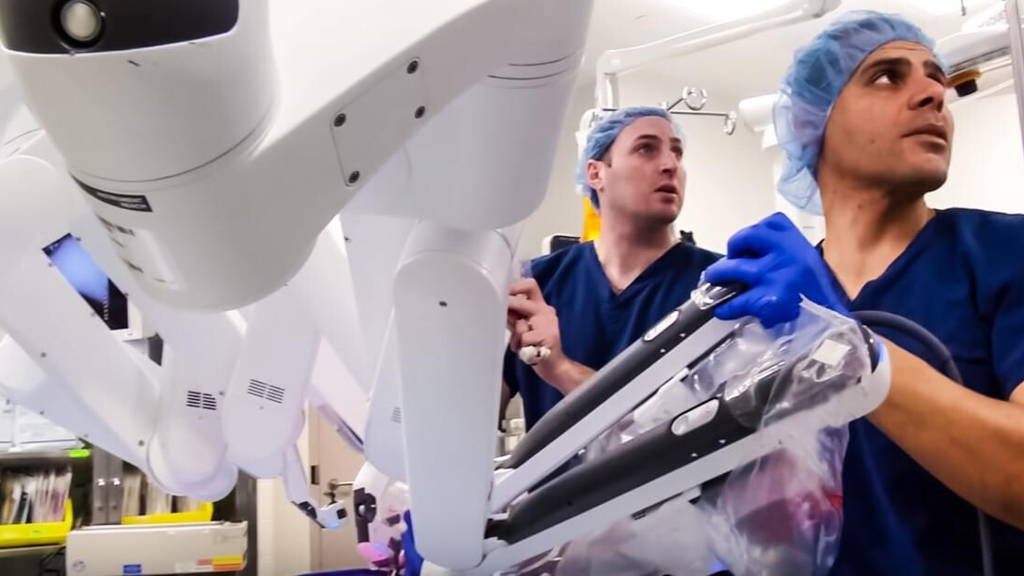The Simulated Inanimate Model for a Physical Learning Experience, or SIMPLE, is a fully 3D-printed simulation of the human body. It mimics the human body and all its functions. With this, SIMPLE adds a realistic layer to practicing operations.
After creating the basic models, Ahmed Ghazi and Jonathan Stone decided to add an extra dimension to their models. By tweaking the designs, it became possible to change the concentration of the hydrogel. This made it possible for surgeons to place lifelike tumours or blockages, which after all have a different feel to them when compared to organs.
This meant collecting scans of the whole human body, including muscle tissue, fat and skin. This would help to recreate the human body as closely as possible. To make the experience really lifelike, they decided to add bags of ‘blood’, consisting of red paint. The bags were connected to the ‘human’, and would release paint when the organs or blood vessels were cut. Other bodily fluids, like urine, were also recreated using paint.
By having the 3D-printer print more raw structures, it became possible to add bone to the mix. This made it possible to mimic surgeries on the skull and spine.
###Simple###
From 3D-printer to moulds
The process of replicating the human body starts with medical scans obtained from an MRI- or CT-scan or ultrasound. These scans are then converted into computer-assisted designs. These scans are uploaded to a 3D-printer, which prints moulds. These moulds are exact replicas of the previously scanned organ. This mould is then filled with hydrogel, which becomes solid when frozen. It, however, keeps it water-like substance. Organs have the same feel to them, making the replicas feel lifelike.After creating the basic models, Ahmed Ghazi and Jonathan Stone decided to add an extra dimension to their models. By tweaking the designs, it became possible to change the concentration of the hydrogel. This made it possible for surgeons to place lifelike tumours or blockages, which after all have a different feel to them when compared to organs.
Lifelike body
Ghazi and Stone’s goal when creating SIMPLE was to simulate a surgery as close to reality as possible for (future) surgeons. After creating the models, the pair tackled the surrounding human anatomy. This would make the practicing of operations realistic: from clamping blood vessels to removing tumours and manoeuvring around organs.This meant collecting scans of the whole human body, including muscle tissue, fat and skin. This would help to recreate the human body as closely as possible. To make the experience really lifelike, they decided to add bags of ‘blood’, consisting of red paint. The bags were connected to the ‘human’, and would release paint when the organs or blood vessels were cut. Other bodily fluids, like urine, were also recreated using paint.
By having the 3D-printer print more raw structures, it became possible to add bone to the mix. This made it possible to mimic surgeries on the skull and spine.
Practicing operations
The development is not only a great tool when training inexperienced students but could also be of help when performing complex surgeries. Surgeons can print their necessary organs and study it, for example to see where a blood vessel enters and exits an organ. It also gives surgeons the opportunity to examine the organ from the inside, by slicing of a piece. SIMPLE opens up a world of educational possibilities.Personalising practice
Although SIMPLE now uses standard moulds, it should become possible to personalise these. Surgeons can at that point practice surgeries using scans of their patient. This helps eliminate uncertainties and betters the quality of care. Patients can reassure themselves by asking their surgeons how the rehearsal went.###Simple###






